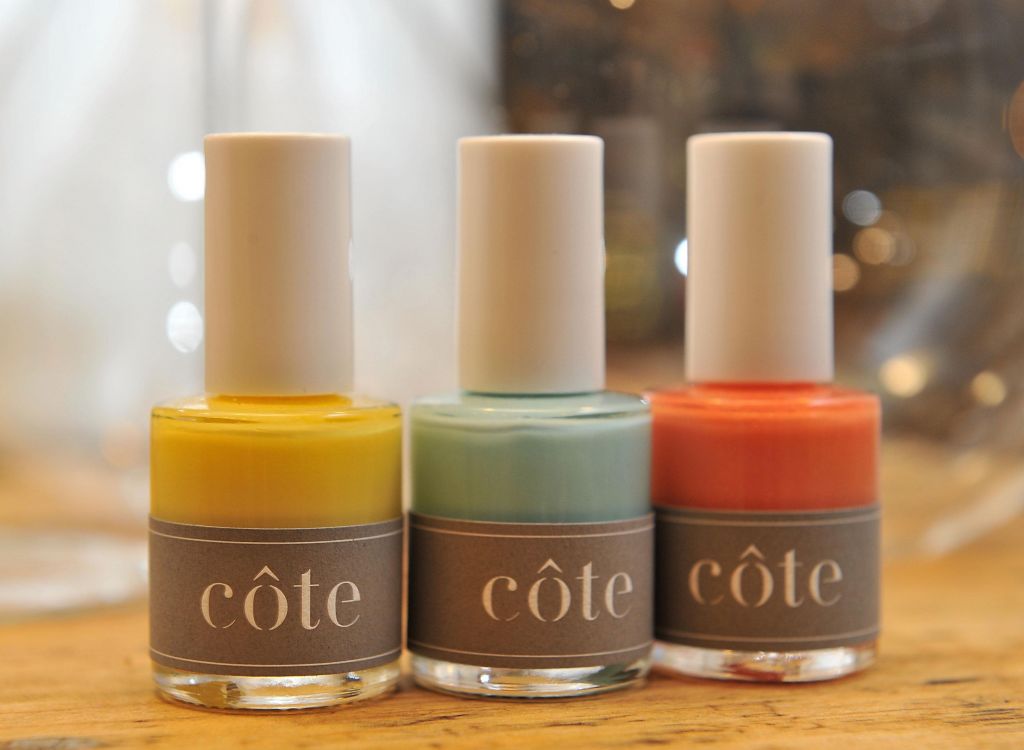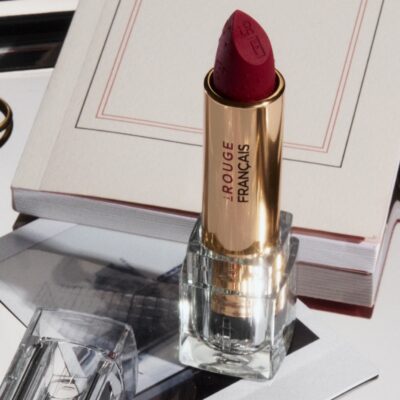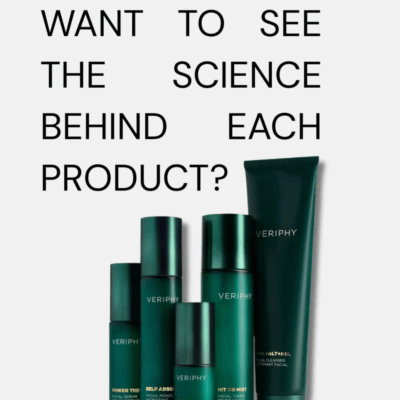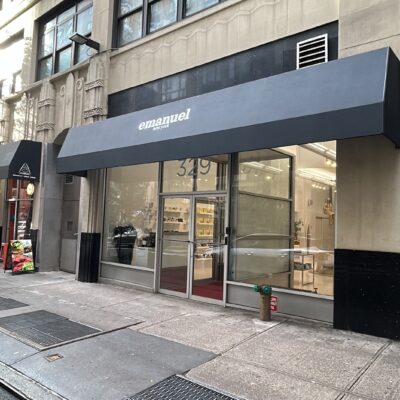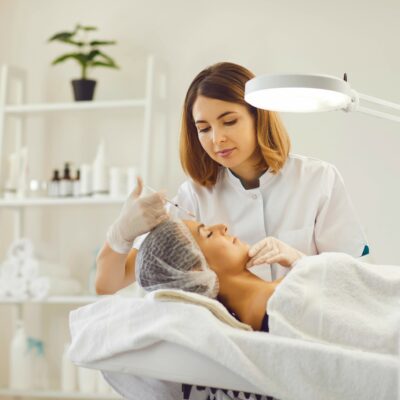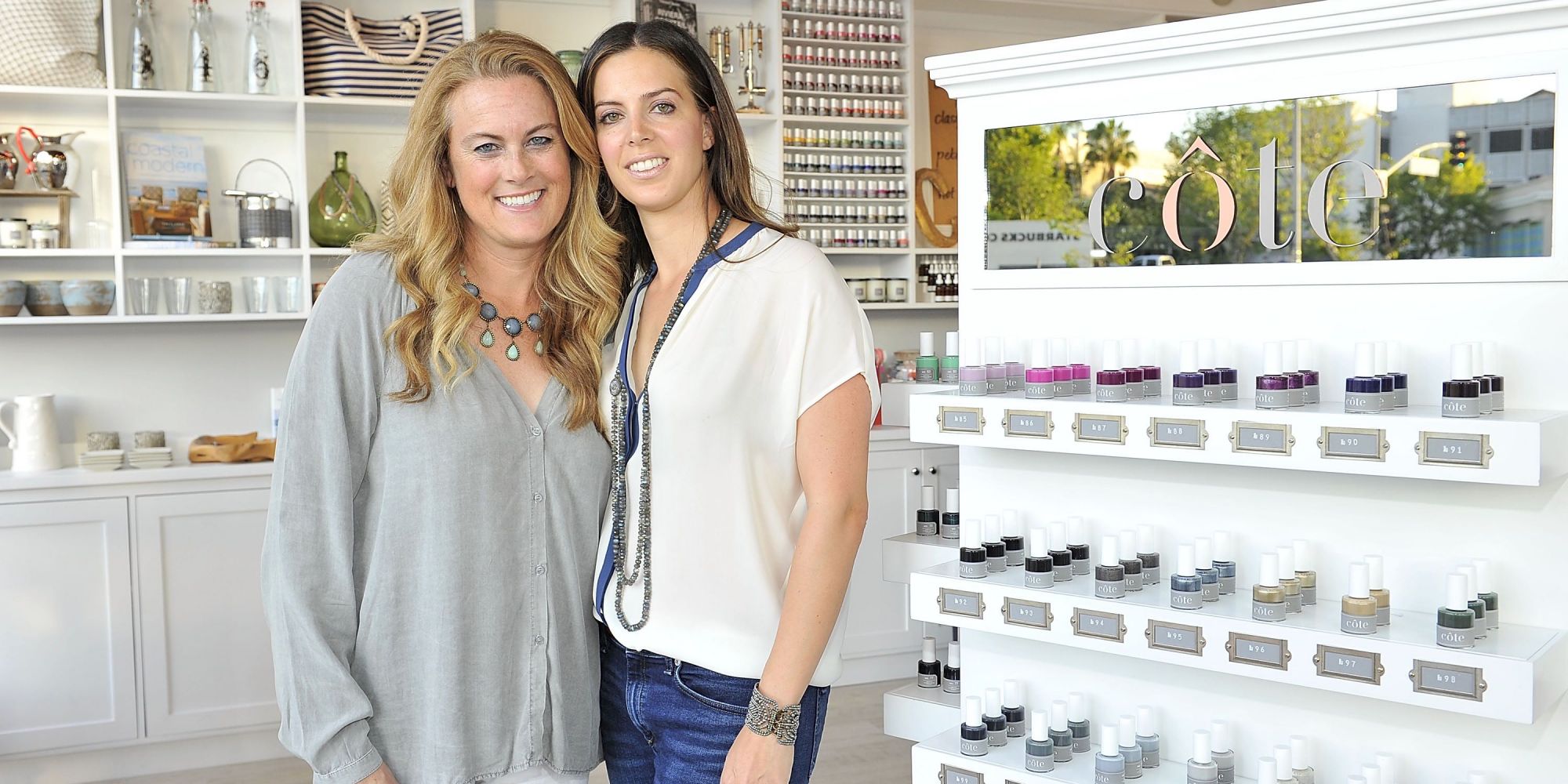
Côte Bridges Clean Nail Polishes With Effortless California Chic
Los Angeles may be known for flip flops and T-shirts, but it has plenty discerning consumers can appreciate like high-end designer shops lining Melrose Place, the culinary arts of Nancy Silverton, Roy Choi and Suzanne Goin, and hip downtown hotels. Despite those refined offerings, Mary Lennon and Leah Yari found the city lacked in the luxury nontoxic nail salon department, and started Côte in 2014 to remedy the sumptuous and safe mani-pedi deficiency. In its flagship salon in the posh L.A. neighborhood Brentwood, Côte sells more than 100 different vegan and cruelty-free nail polishes, and complements its nail merchandise with a gift shop filled with unique goods such as locally-produced leather postcards and straw hats. The message to Côte customers is clear: buy into an elegant yet effortless lifestyle and pick up a bottle of your favorite nail polish to boot. That message seems to be well-received. Lennon and Yari opened a second location in New York in the fall, and are nowhere near done strengthening the Côte milieu. Beauty Independent spoke with them about Côte’s multipronged retail strategy and the future of clean beauty.
How did you come up with Côte’s retail strategy?
Lennon: At first, it was just an idea. Maybe we’ll do a couple of colors, and we’ll try to clean up the service side. As we dove into the industry, there’s so many unknowns and it’s so unregulated. It’s hard to know who’s clean and who’s not clean because nobody is holding any of these companies accountable. We decided we really need to clean this up, and it needs to start with the product and then move outward to include the environment, the salon space, the breadth of products that follow after the polishes. It really centers on the nail polish.
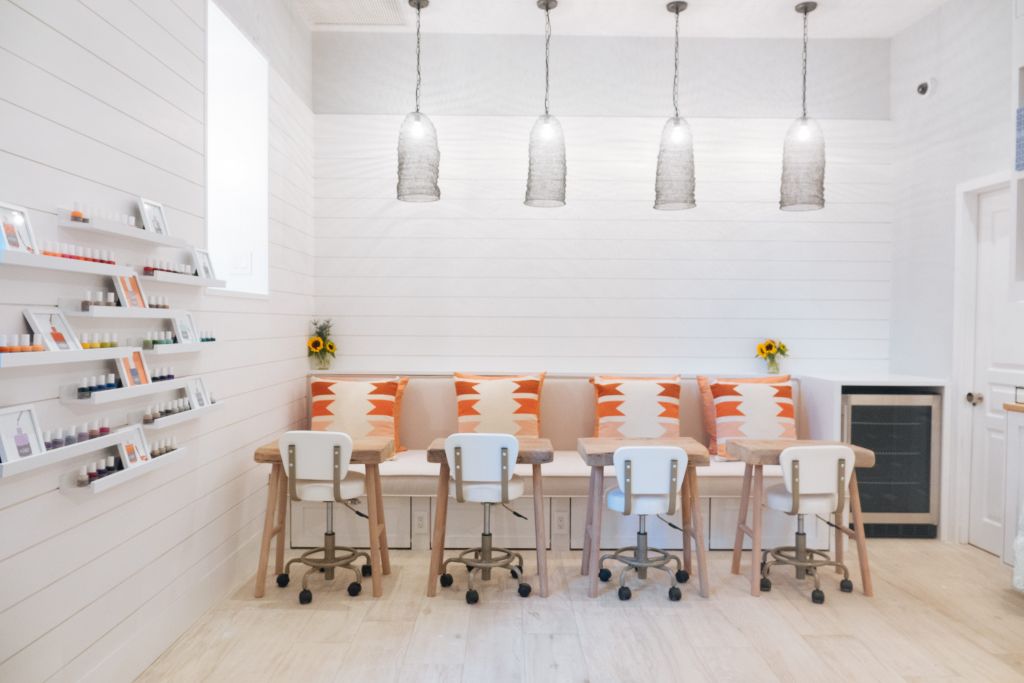
Is it accurate to state you’re selling a lifestyle and the nail polish is one part of that?
Yari: Yeah, when we started Côte, we wanted to give it that kind of identity as being an easy lifestyle brand that’s wasn’t intimidating, kind of like the beach house in the city. Everything that we carry in the shop is something you could either fit in your beach bag or put in your beach house.
How long did it take to launch?
Lennon: It took us a year-and-a-half to develop the line. We weren’t just developing the product line. We were doing the store at the same time. It wasn’t just trying to create a product with a package and a label. It was creating all of that and trying to design a store and design furniture for the store. We view both of our storefronts as marketing tools, so it’s really an opportunity to get people to experience the brand firsthand from every sensory, which is why we included a candle. We wanted every single sense to be involved in this brand.
Can you tell me a bit about fundraising?
Lennon: We’re privately funded. I didn’t come from a very specific business background. This was a massive learning curve for me. We sat down and we put this together by ourselves. We looked at other business plans in the beauty space and created the entire portfolio ourselves, and then went to our husbands and presented. They were the ones who were encouraging us from the beginning to make this happen. We were big talkers, “Wouldn’t this be great if someone did this?” and “I’d change this.” Finally, they just both said, “Let’s put our money where your mouths are. You’re talking such a big game, let’s finally do something about this. It seems like you have a great idea here.” We were able to get a $2 million commitment from the beginning to get the R&D up and running, and the real estate and employees secured.
What is the e-commerce strategy? Do you personally manage the site or do you outsource that management?
Lennon: We handle everything online ourselves. Our focus and our online strategy is to point the spotlight on our products and that’s the way the site is designed. We have some other retail offerings on the site, but that’s not really our focus. We want to drive the traffic to the site for our products specifically. The retail items tend to be specific to the two stores, and they tend to be purchased with those specific markets in mind.
Yari: We keep learning. We did orders from middle America. People on the coasts will buy three to five polishes online. People in Middle of America will buy 10 or 15 at once. It’s interesting to watch that growth and to see the difference in the consumer markets between the coasts, which we thought were our target markets, but now we see [sales] across the country.
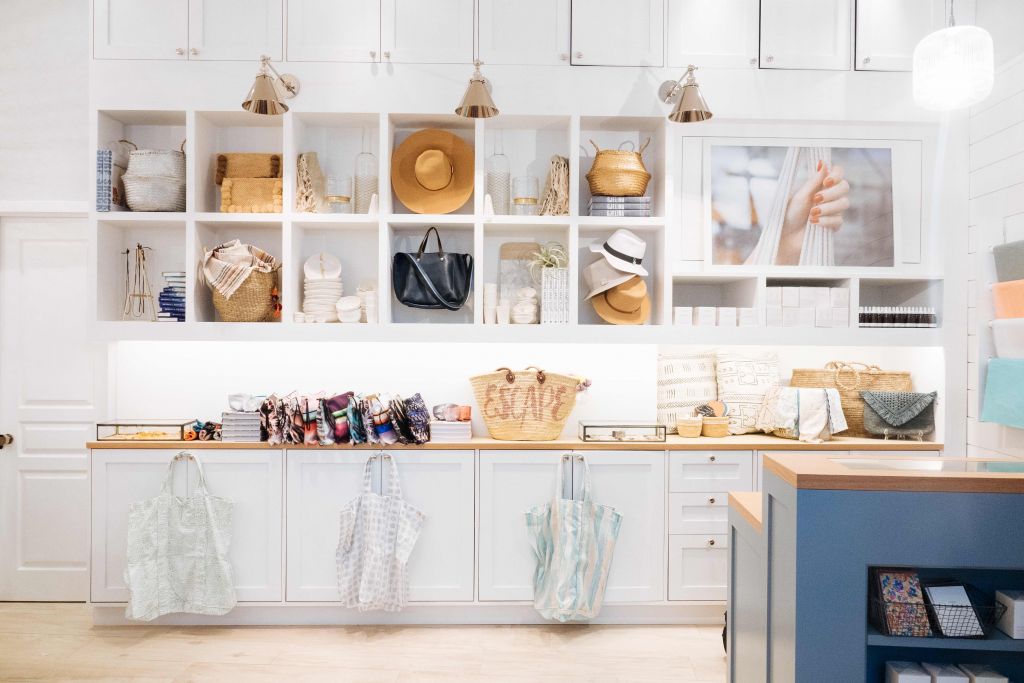
How much business are your retail areas responsible for?
Lennon: Retail sales represent about 50% of our in-store revenue.
What has Côte’s growth been like? Is it profitable?
Lennon: The online growth is what we’ve been really amazed with. It’s growing at almost 20% per year. For the Los Angeles store, we’ve been profitable for about two years. On the corporate side, we need to look at the online sales and the distribution. I’m hopeful we can be profitable in the next 12 months.
What’s the distribution strategy for Côte products?
Lennon: We’d love to find a bigger beauty house partnership or some sort of large funnel distribution. We’ve been mostly on the smaller scale side. Our strategy right now is just to get the brand name out there and then try to get on some significant shelves.
What’s a dream retailer for the brand?
Lennon: I’ve been really impressed with mid-sized beauty outlets like Cos Bar, Space NK, Credo Beauty. It really needs to match our ethos. The first thing that jumps in my head is the big department stores like Nordstrom and Macy’s. Honestly, if it were in something like that, I would want it to be part of their greener shop, where the brands make sense, not just thrown in with anything else.
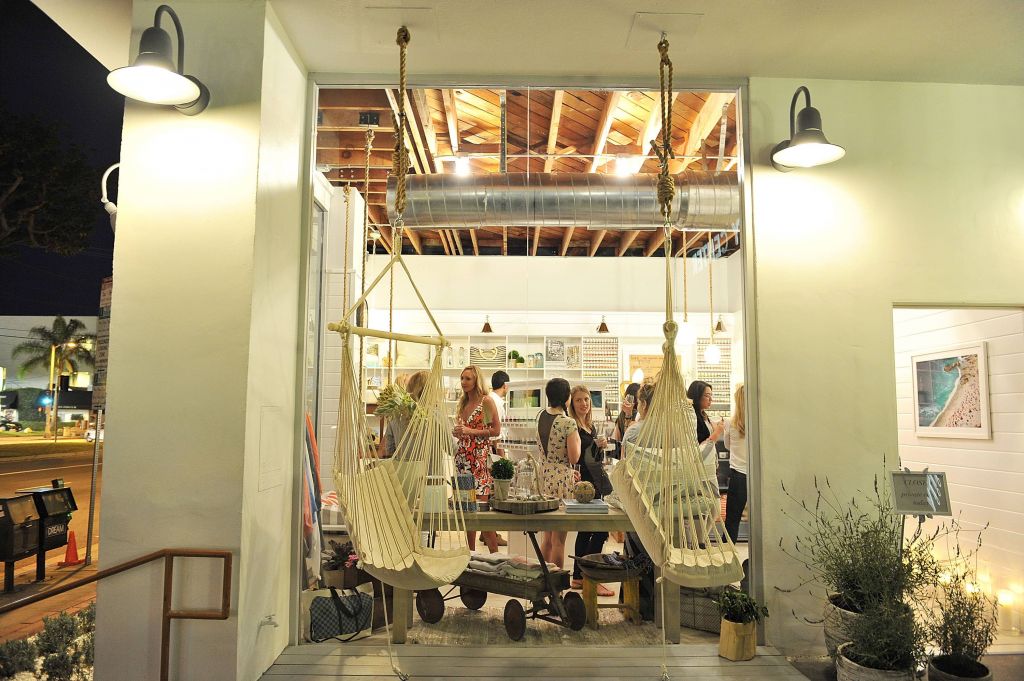
What is Côte’s price range, and how did you land on it?
Lennon: The reality is we’re a smaller brand. We’re not doing massive volumes, and we’re also using more expensive ingredients. When you start to swap out chemicals and replace them with chemicals that aren’t as harsh or aren’t as toxic, there is a cost involved. What we’re making is really a premium product. That’s where we came up with our price point. The traveler size is $8, which is sort of the to-go product. I hate to call it a sampler because you do actually get quite a bit of polish in there. That’s kind of our quick grab-and-go, candy-store kind of offering. The breadth of our product stands between the $18 and $21 range. In the world of nail polish, you can get a $1 bottle at CVS. You can also get a $50 bottle of Christian Louboutin at the department store. For the quality of the product that we are producing, we’re fairly priced. We’re right in the middle of all of that. I think we go head-to-head with a lot of other major brands.
What is the brand’s hero product, and how did it come to be?
Yari: Our treatments sell really well, but surprisingly our removers have sold out before we could even put them out. The smell is great. It doesn’t have a strong odor to it and takes off the polish easily, but it exceeded even what we thought it would do. For color, another one that surprised us is No. 13 and No. 71 have been sold out countless times. It surprises us because it’s not a neutral, and it’s not a red. No. 13 is actually a rose gold, and No. 71 is a bright blue.
Who is Côte’s target customer?
Yari: I’m the target. I feel that the target market is the health-oriented Westside mom. It could be Westside of L.A., but it’s most likely anyone on either coast who really feels that they’re moving in the right direction to find more clean products for their face and their hair, and slowly they are understanding that the nail is also something important to keep clean. People put their fingers in their mouths. Kids bite their nails. It all goes into your system. The target market is anywhere from 25 to 65 more aware women.
If you could get your products into anyone’s hands, who would it be and why?
Lennon: Kaia Gerber because she’s so of the moment right now. She’s gorgeous, and I think she has the potential to influence that younger group of girls and women who are on the edge of their first job and are starting to buy their own products, not just borrow whatever’s on mom’s counter. It’s so important that these girls start to make educated choices from the beginning.
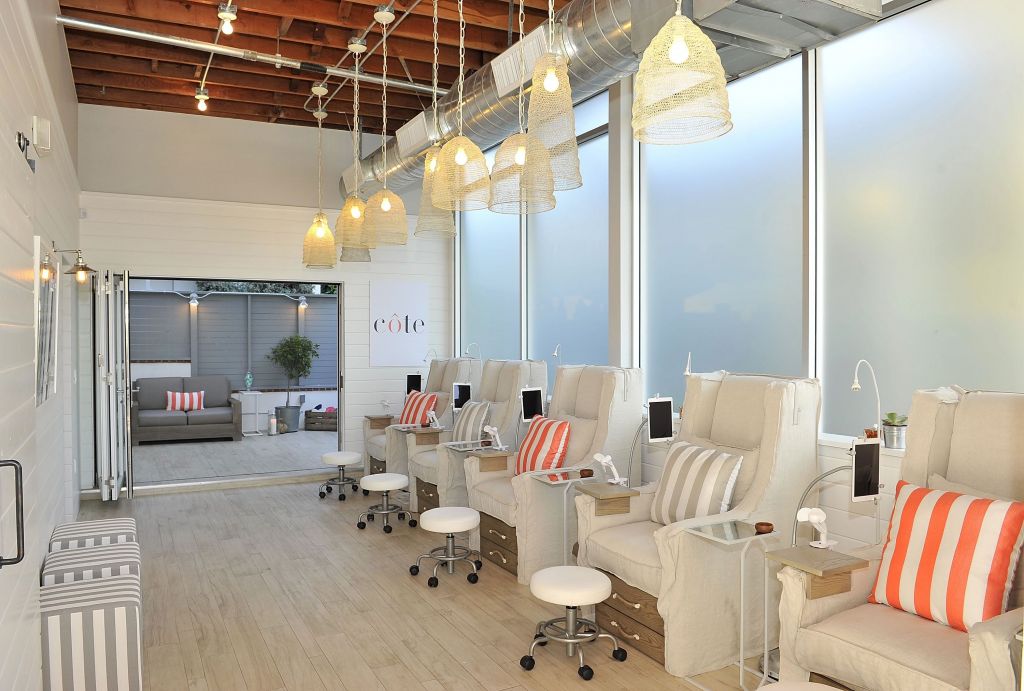
Do you have influencers promoting Côte?
Lennon: We have a lot of celebrity clientele who come into the store in Brentwood on a regular basis, but it’s very rare that we would turn around and post them or thank them. It’s their time to get away too, and oftentimes they will post nice things about us. It’s up to them. We’re not chasing down a celebrity influencer right now.
How do you use social media?
Yari: It speaks again to our lifestyle brand and the identity of Côte. We can best show everybody who Côte is when you walk into the shop, but, if you don’t have access to the shop, our Instagram and social media makes you feel and live that lifestyle. I have people that stop me a lot and tell me they love our feed because it makes them feel like they’re on vacation, and it’s not a very intimidating vacation. It just feels like a beach vacation they’re longing for. When they can’t stop in the shop, it’s the best way to show who we are.
What’s in the pipeline for Côte?
Lennon: We’re all about cleaner, safer beauty, and getting people to realize what’s in their brands and how it affects them. Recently, Leah and I were asked to be involved with an organization called Counteract Coalition. It’s something Beautycounter, a clean beauty brand on the West Coast with a presence all over North America, is spearheading. It’s a group of 15 or 20 businesses all in the beauty space that are, for the most part, are run by women. We have formed this coalition to work with the government and get laws passed through the FDA [U.S. Food and Drug Administration] to start to regulate what goes into these products a lot more closely. We feel it is a good national stage to let people know we’re practicing what we preach, and we’re trying to make a difference in the beauty space.
